When it comes to the safety of dogs, understanding the potential dangers posed by local wildlife is crucial for pet owners. Whether living in urban areas that border natural habitats or in rural settings, the risk of encounters between dogs and various wild animals is a real concern. This article sheds light on seven animals that pose significant risks to dogs. By highlighting the behaviors of these animals and offering preventive measures, dog owners can be better prepared to protect their pets. Awareness and preparedness are key in preventing tragic interactions between dogs and wildlife.
Contents
Bears
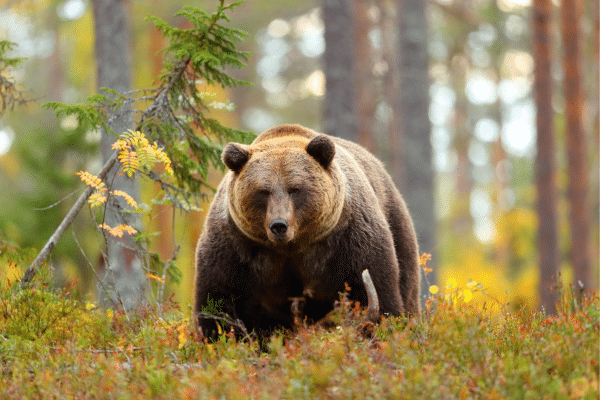
Bears, including both black and grizzly varieties, can pose a significant threat to dogs. Encounters usually occur unexpectedly, often in areas where bears are foraging for food or protecting their young. Dogs, driven by their curiosity and instinct to protect, may inadvertently provoke a bear, leading to a potentially dangerous confrontation. It is essential for dog owners to understand the serious risk bears represent, particularly in wilderness areas or regions where bear populations are prevalent.
To mitigate the risk of bear encounters, several precautions are recommended. Keeping dogs on a leash in bear-prone areas, making noise while hiking to avoid surprising a bear, and using bear-proof containers for food and garbage can significantly reduce the likelihood of an encounter. In the unfortunate event of coming across a bear while with a dog, it is critical to remain calm, slowly back away, and avoid running, which can trigger a bear’s chase instinct. Understanding these safety tips and educating oneself on bear behavior can help prevent tragic interactions.
Snakes
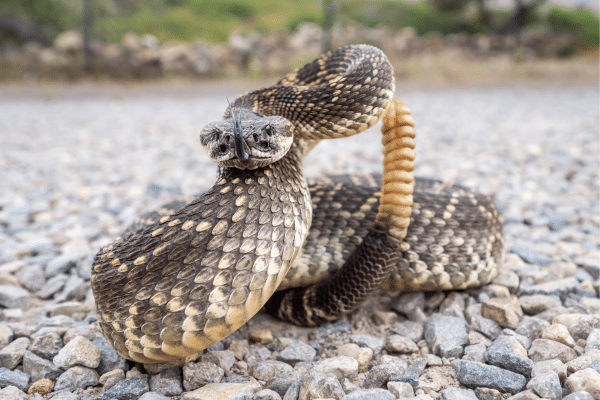
Venomous snakes, such as rattlesnakes, copperheads, and cottonmouths, present a real danger to dogs, especially those that roam freely in areas where these snakes are native. Dogs often get bitten as a result of their natural curiosity, poking their noses into snake hiding spots or attempting to play with or attack the snake. Such encounters can lead to severe injuries or even death, depending on the snake species and the amount of venom injected.
Immediate action is crucial following a snake bite. Recognizing the symptoms early, which can include swelling, yelping in pain, and lethargy, and seeking veterinary care promptly can be life-saving. Preventive measures, such as keeping dogs on established trails during walks, supervising them closely in snake-prone areas, and considering snake avoidance training, can greatly reduce the risk of snake bites. Dog owners living in areas with a high population of venomous snakes should also educate themselves on the types of snakes in their area and familiarize themselves with emergency response steps.
Coyotes
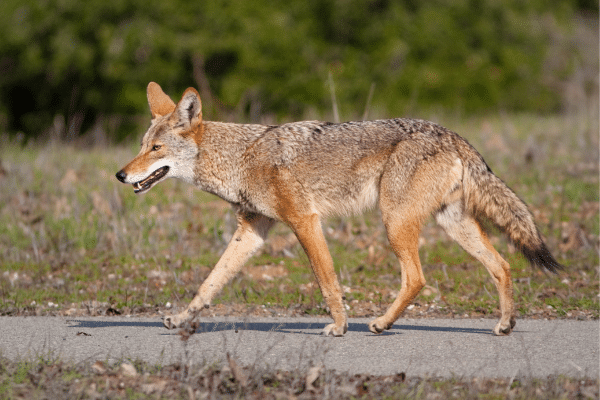
The encroachment of urban and suburban development into natural habitats has led to increased encounters between dogs and coyotes. Coyotes may view smaller dogs as prey and larger dogs as competition, leading to potentially dangerous situations. These encounters are more common during the coyote breeding season when coyotes are more aggressive and territorial. Understanding the behavior of coyotes and the risks they pose is essential for dog owners living in areas where coyotes are present.
Protecting pets from coyotes involves several strategies. Not leaving dogs unattended outside, especially during dawn and dusk when coyotes are most active, and installing coyote-proof fencing around yards can help keep pets safe. Additionally, walking dogs on a leash, avoiding areas known for coyote activity, and carrying a deterrent, such as a loud whistle or pepper spray, can help prevent confrontations. By taking these precautions, dog owners can reduce the likelihood of dangerous interactions with coyotes.
Cougars
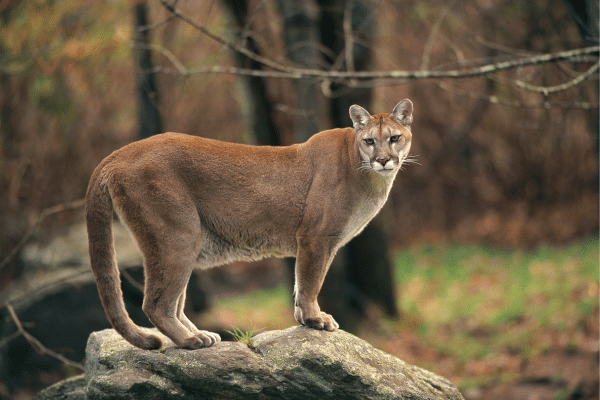
Cougars, also known as mountain lions, are apex predators in their ecosystems and can pose a significant danger to dogs, especially in regions where their territories overlap with human habitation. These large cats view dogs not only as prey but also as a threat, leading to potentially deadly encounters. The solitary nature of cougars means that they are adept at stalking their prey, often catching dogs and their owners by surprise. Awareness of the presence of cougars in the area and understanding their behavior are crucial for preventing encounters.
Safety measures for dog owners include keeping pets on a leash while hiking in cougar territories, avoiding walking at dawn and dusk when cougars are most active, and making noise to reduce the chance of surprising a cougar. In the event of a cougar sighting, it is important to keep the dog close, pick up small dogs if possible, and attempt to appear larger and more intimidating by raising arms and speaking loudly without turning the back or running away. These actions can deter a cougar from approaching or attacking.
Scorpions
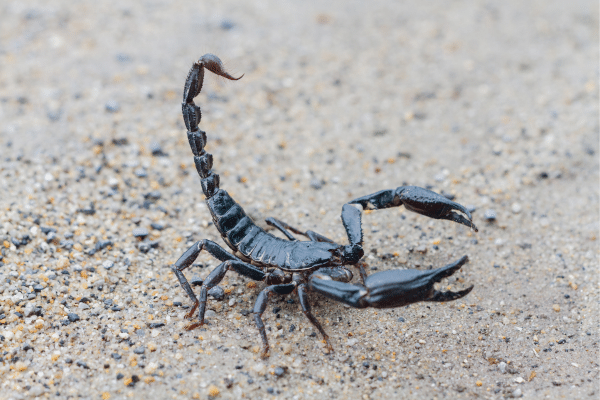
Scorpions pose a unique threat to dogs, especially in arid and desert regions where these creatures are commonly found. The curiosity of dogs often leads them to investigate and potentially disturb scorpions, resulting in painful and potentially dangerous stings. The venom of certain scorpion species can cause significant health issues for dogs, including pain, swelling, and, in more severe cases, neurological symptoms. It is vital for dog owners to be aware of the presence of scorpions in their environment and to understand the risks they pose.
Minimizing the risk of scorpion stings involves several preventive measures, such as checking bedding, shoes, and outdoor areas regularly for scorpions before allowing dogs to explore. In areas known for scorpion activity, keeping dogs away from rock piles, wood stacks, and other scorpion hiding places is advisable. Should a dog be stung by a scorpion, prompt veterinary care is essential to manage pain and monitor for more serious symptoms. Dog owners should familiarize themselves with the signs of a scorpion sting and have a plan for seeking immediate veterinary assistance.
Porcupines
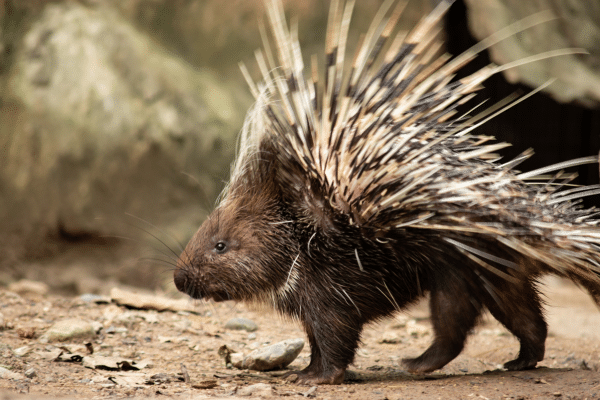
Encounters between dogs and porcupines can result in painful and dangerous situations. The defensive mechanism of porcupines, which involves embedding sharp quills into the skin of potential threats, can cause serious injuries to dogs. Curious or protective dogs may provoke porcupines, leading to quills being lodged in the dog’s face, mouth, or paws. These quills can migrate deeper into the body if not removed promptly and properly, causing further complications. Knowledge of porcupine habitats and behaviors can help dog owners prevent these hazardous encounters.
In the event that a dog encounters a porcupine and gets quilled, it is imperative to seek veterinary care immediately for safe removal. Attempting to remove quills at home can cause the quills to break and become even more difficult to remove. Prevention strategies include keeping dogs on a leash in wooded areas where porcupines are known to live and training dogs to come when called to avoid potential run-ins with wildlife. Educating oneself on the habitats and warning signs of porcupine presence can significantly reduce the risk of quilling incidents.
Toxic Toads
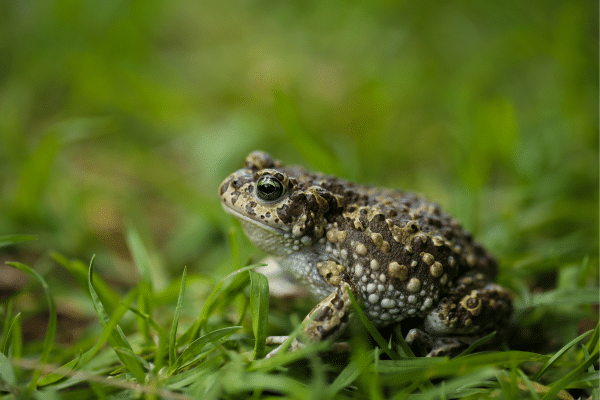
In certain regions, toxic toads present a significant danger to dogs. Species such as the cane toad excrete a potent toxin that can be lethal to pets if ingested. Dogs can be poisoned by mouthing or biting into these toads, leading to severe symptoms such as drooling, seizures, and even death. The rapid onset of symptoms following exposure to toad toxin necessitates immediate veterinary intervention. Dog owners in areas where toxic toads are prevalent must be vigilant and take proactive steps to minimize the risk of exposure.
Preventing dog-toad interactions includes supervising pets closely while outdoors, especially during the evening and night when toads are more active. Creating a toad-free environment by eliminating standing water and keeping grass short can also deter toads from entering yards. In case of suspected toad poisoning, it is critical to rinse the dog’s mouth with water (ensuring the water is directed outward to prevent swallowing) and seek veterinary care immediately. Familiarity with the symptoms of toad toxin exposure and having an emergency plan can save a dog’s life.
The Bottom Line
The well-being of dogs is a priority for pet owners, necessitating awareness and understanding of potential dangers posed by local wildlife. From apex predators like cougars to venomous creatures such as scorpions and toxic toads, the natural world is filled with animals that can harm dogs. By taking proactive measures, such as keeping dogs on leashes in certain environments, supervising outdoor activities, and implementing wildlife-proofing strategies, the risk of dangerous encounters can be minimized. Ultimately, the key to protecting pets lies in education, preparation, and prompt action in the face of potential dangers.


